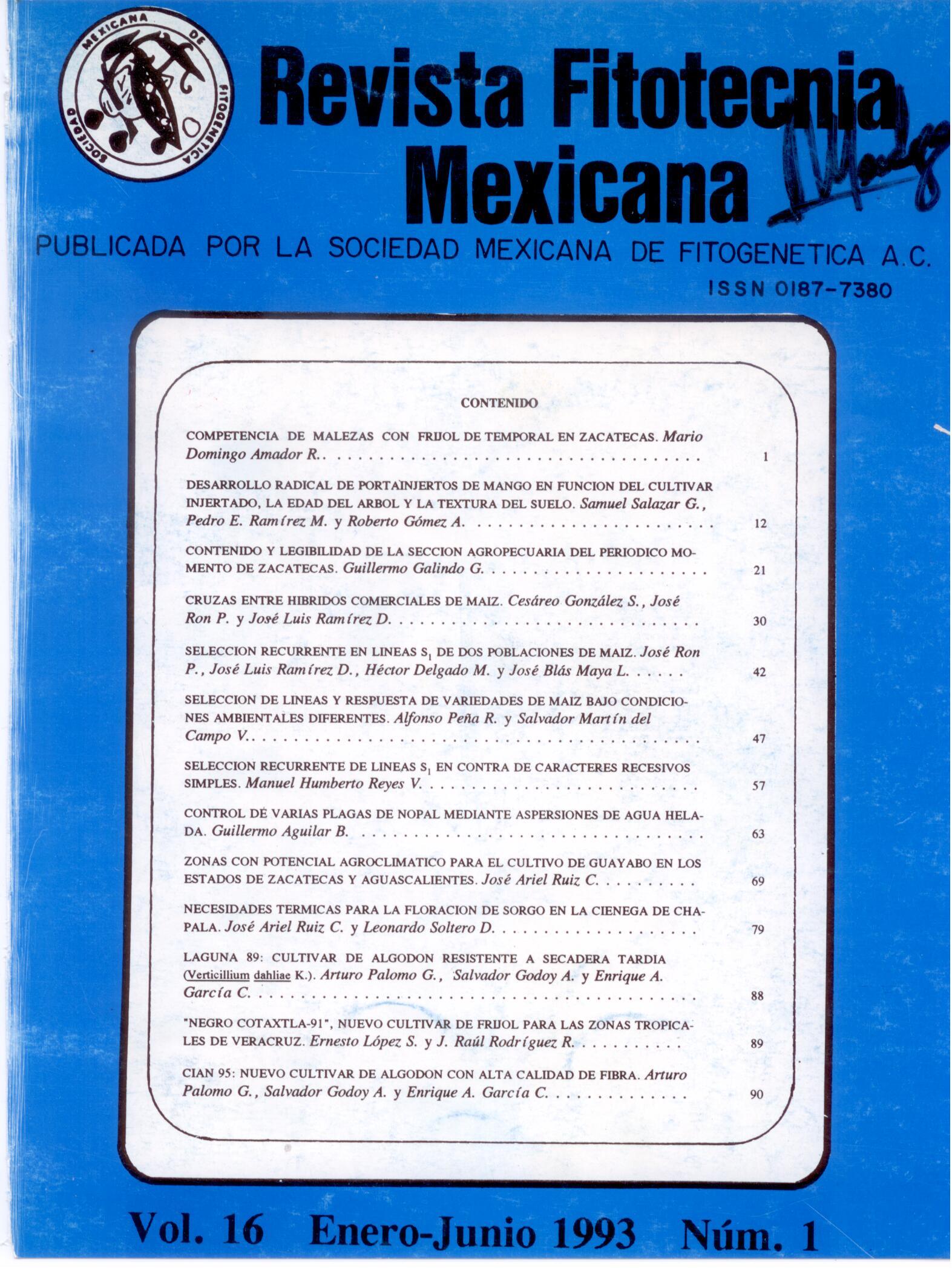"NEGRO COTAXTLA-91" NEW BEANS CULTIVAR FOR TROPICAL REGIONS IN VERACRUZ
Main Article Content
Abstract
The most important diseases in the main bean-growing areas of the state of Veracruz are: rust, Uromyces appendiculatus bv. phaseoli and the golden mosaic (BGMV). The rust occurs throughout the state, while the golden mosaic occurs only in the northern area. The incidence of both diseases and the widespread use of cultivars susceptible to them, such as the Jamapa variety, made it necessary to generate genetic material resistant to both diseases and with high yields. "Negro Cotaxtla-91" originated from the cross D-149 x 1397 carried out in the Cotaxtla Experimental Field, from plants extracted from the F3 population, in Tihuatlán, Ver. Negro Cotaxtla-91 is a product of individual selection in F3, and of the mass compound of two plants in the next generation. The pedigree of this cultivar is II99-CM-15-T-CM (2). Among the characteristics that distinguish it are: its indeterminate bushy growth habit, with short guides, purple-green branches and stem, and purple-reddish pods. The grain is small and opaque. The plant has a height of 75 to 82 cm, flowers between 43 and 46 days after sowing and is harvested between 90 and 93 days. Among the qualities that highlight this variety are its resistance to rust, a very common disease during sowing dates outside the month of October, and its tolerance to the golden mosaic virus (BGMV). The performance evaluations of the Negro Cotaxtla-91 variety, compared to the Jamapa and Negro Huasteco-81 varieties, were carried out from 1987 to 1990, in autumn-winter and winter-spring sowings, in locations in the north, center and south of the Veracruz state. The average yield in 14 experiments of this cultivar was 1477 kg/ha, exceeding the yield of Jamapa by 15% and Negro Huasteco-81 by 12%. Negro Cotaxtla-91 can be planted throughout the state of Veracruz, in a range of 0-1000 meters above sea level, especially in areas with rust and golden mosaic virus problems. The cultivar was registered in 1992, in the National Registry of Plant Varieties, with the number FRI-200292-059. The variety trainer was the INIFAP bean program.

